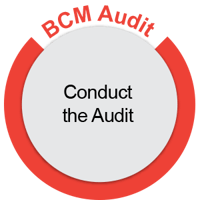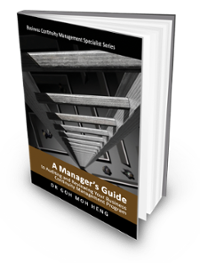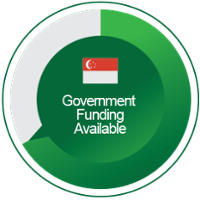Conduct the Audit
Once the opening meeting is completed and it is time to start the first meeting with the Auditee, arrive and meet the executive Auditee. This internal representative will be assigned to the assigned business unit manager.
Expectation of Auditor During Conduct of Audit
As an Auditor, you are expected to:
- Explain what you want to see/do
- Investigate to a necessary depth
- Satisfy the sample requirement
- Do not over-sample
- Do not assume wrong exists
- Move on to the next business unit.
While conducting the audit the Auditor may want to observe the following
Learning Useful Audit Tips
- Use your audit checklist as your guide
- Document audit trails as it begins to appear
- You will make many observations.
- Make the following decisions:
- Disregard
- Note for later follow-up
- Follow-up now
- Call in a team
- Request for the technical expert
- Seek assistance from related parties
These are additional guidance to Auditors on:
- Asking questions
- Phrasing questions
- Taking notes
- Practising good audit behaviour
Asking Questions
These are some of the questioning techniques that are used during a typical interview:
- Clear: This question is usually simple and unambiguous.
- Closed-ended: These usually result in a “Yes” or “No” answer.
- Open-ended: This questioning approach will result in a long answer being provided.
- Probing: These specific questions are used for finding details
Phrasing of Questions
The techniques for the phrasing of each question usually start with the 4 “Ws”: Who, What, When and Where. However, questions phrased with “Why”, “How” and “Elaborate” tend to provide better answers.
Taking Notes
It is important to take notes constantly throughout the audit as they make a good reference. The notes can be used for investigation for both the present and at a later stage of the audit. These notes can also be shared with the other Auditors and be referred to in future audits.
Auditors are strongly encouraged not to rely on or trust their memory when documenting evidence. Taking notes requires the writer to have the content recorded legibly, retrievable from the system, and be as specific as possible, with citation of examples.
The notes should be a copious and must-have reference or document numbers, dates, and serial numbers. For the notes to be used as objective evidence, they should have the following:
- Statements that should be admissible
- Dates
- Document numbers
- Item Identifiers
- Locations and Places
- Revision information
- Names
- Designations of Auditees
Practising Good Audit Behavior
Here are some good and bad auditing practices and behaviours that Auditors should constantly be aware of.
Summary of Good and Bad Audit Practices
|
Good Auditing Practices |
Undesirable Auditing Behaviour |
|
Talk to the right people |
Give subjective opinions |
|
Speak clearly and simply |
Ask too many unnecessary questions |
|
Learn to use local terminology and language |
Ask leading questions |
|
Look at the person in the eyes when interviewing |
Appear to understand when you do not know |
|
Do not talk down to anyone |
Taking sides during the audit |
|
Show the Auditees that you are their friends |
Provide Auditees with insufficient time to answer |
|
Be unemotional and impartial. |
Provoke an argument |
|
Do not get excited or fix the blame |
Criticize individuals |
|
Avoid interrupting an Auditee. |
Do not thank the Auditee |
|
Find the facts and present them |
Attempt to answer your questions |
|
Rephrase your question if the Auditee does not seem to know what you are asking. |
Hide non-conformance until the report is presented |
The Auditors should also avoid known pitfalls and difficulties such as expectation gaps arising from the local environment, cultural divergence, or the lack of specialist expertise.
Resource
Goh, M. H. (2016). A Manager's Guide to Auditing and Reviewing Your Business Continuity Management Program. Business Continuity Management Series (2nd ed.). Singapore: GMH Pte Ltd.
Extracted from "Chapter 5-9: Conduct the Audit"
Singapore  Government Funding for BCM-8530 Course
Government Funding for BCM-8530 Course
The next section applied to Singaporean and Singapore permanent residents. Click the button "Government Funding Available" to find out more about the funding that is available from the Singapore government. This includes the CITREP+, SkillsFuture Credit and UTAP.
Find out more about Blended Learning BCM-8530 [BL-A-5] & BCM-8030 [BL-A-3]
 |
 |
 |
 |
![TMM [BL-A-5]](https://no-cache.hubspot.com/cta/default/3893111/e7af9322-15cb-412d-91b6-59cd388ee6e9.png) |
![Register [BL-A-5]](https://no-cache.hubspot.com/cta/default/3893111/bb38417e-6241-4057-b90c-f319f31a494e.png) |
 |
Please feel free to send us a note if you have any of these questions to sales.ap@bcm-institute.org |  |





